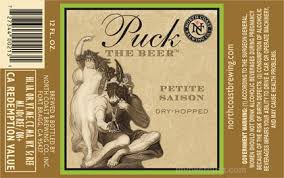 I have been in the beer business for many years. That doesn’t mean I still don’t learn things from time to time. One of those things recently was the historic style Grisette. Even though the name was vaguely familiar, until a few weeks ago I didn’t know very much about it.
I have been in the beer business for many years. That doesn’t mean I still don’t learn things from time to time. One of those things recently was the historic style Grisette. Even though the name was vaguely familiar, until a few weeks ago I didn’t know very much about it.
Grisette is related to Saison in that it was born in the French region of Belgium. Saison was a beer of the agrarian age, brewed by farmers for serving to farmhands working the fields. Grisette, however, is a beer that transitions to the industrial age. It was, reportedly, made for miners in the region to sustain them through their difficult days.
I have read, although cannot confirm the accuracy, that the name Grisette (grise is French for grey) comes from the grey smocks worn by the women who delivered the beer to the miners at the coal face. It may not be true, but I kinda like it.
The parallels between the two beer are interesting. Both are a beer made for the toiling classes to sate them during their difficult, brutal work days. They also have flavour similarities, although it seems grisette should be lighter both in body and alcohol.
I mention all this because recently the first grisette (to my knowledge) entered the Alberta market. North Coast Puck is vaguely marketed – they call it a dry-hopped “petite saison” – but a bit of digging reveals it is intended as a grisette. Having never sampled a grisette I cannot speak to how authentic it is to the style, but I am happy to offer my thoughts nonetheless.
The beer pours pale yellow with a consistent blanket of tight bubbled white head. It also offers a bit of lacing on the glass. The aroma has a soft grainy pilsner malt, some touches of honey and peach fruit. It also offers a light pepperiness, but nothing too big.I also find I pick up a bit of lavender as well, although I am not sure why. It is, overall, Quiet and soft.
The first sip reveals a chalky grain upfront with a pilsner accent. The middle brings out a bit of earthiness and just the slightest hint of pepper that seems to blink in and out. Some light fruit adds a second dimension. The beer is very light in its impression. The finish is only slightly Belgian as well as being quite dry. The dry-hopping (which I am told there is) is pretty understated, only showing up as a bit of fresh grass at the end.
It is hard to figure out how to judge this beer. If you judge this as a saison you will be disappointed. It is designed to be more sessionable than that. It seems to offer a bit of a middle ground. The Belgian character is present but understated, giving you a clear sense this is no ordinary blonde ale, but it need not scare you off. The beer is intriguing in its delicateness. On the surface there is not much there, but there seems to be enough to keep you from getting bored.
My instinct is to use this beer in between two bigger beer as a way to refresh my palate. It is light and quenching without doing anything too intense to your palate. Overall an enjoyable, very light and slightly spicy beer.
I repeat that I cannot judge this beer as a grisette, never having tried one before. I can say it has saison-like qualities but is a bit lighter, a bit more refreshing. All I will say is that I like the beer, style guidelines or not.

August 26, 2015 at 7:17 PM
If you liked the grisette, Lighthouse released the Jackline Rhubarb Grisette in their mixed 12 pack this summer. You should be able to find some hanging around still! Highly refreshing. That was the first grisette I found, shortly before the Puck.